North Beach Restaurant Artwork by
Robert De Niro, Sr.,
Manuel Neri, and Max Weber
Courtesy of
HACKETT MILL, San Francisco
art@hackettmill.com
Scroll down to view
artwork details
and information about the artists
ROBERT DE NIRO, SR.
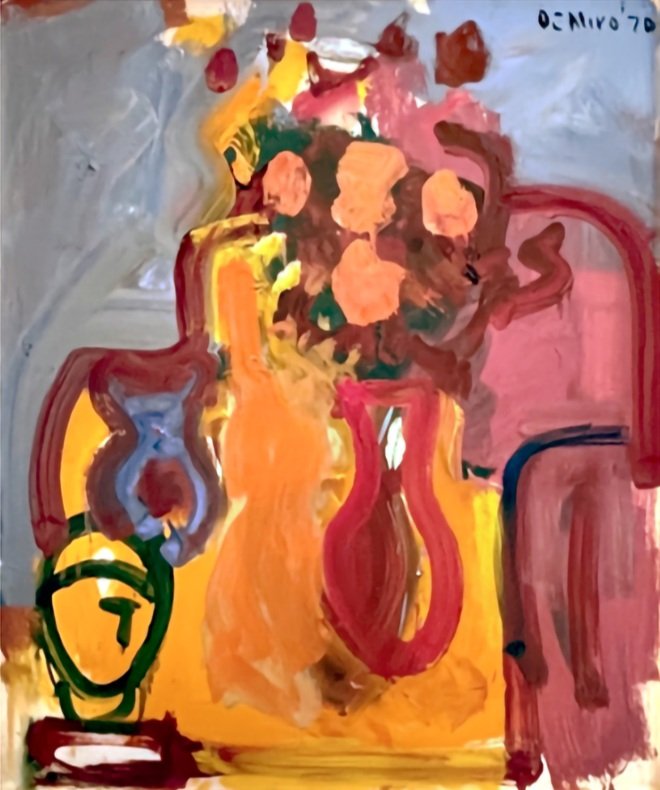
Robert De Niro, Sr.
Still Life
Oil on panel, 1970
24 x 20 inches

Robert De Niro, Sr.
Yellow Shirt, Blue Scarf
Oil on canvas, c. 1960s
36 x 24 inches
(framed: 44.5 x 32.25 x 3 inches)

Robert De Niro, Sr.
Nude With Leg Up
Oil on canvas, 1970
46.25 x 40 inches
(framed: 56.5 x 50.75 x 3 inches)
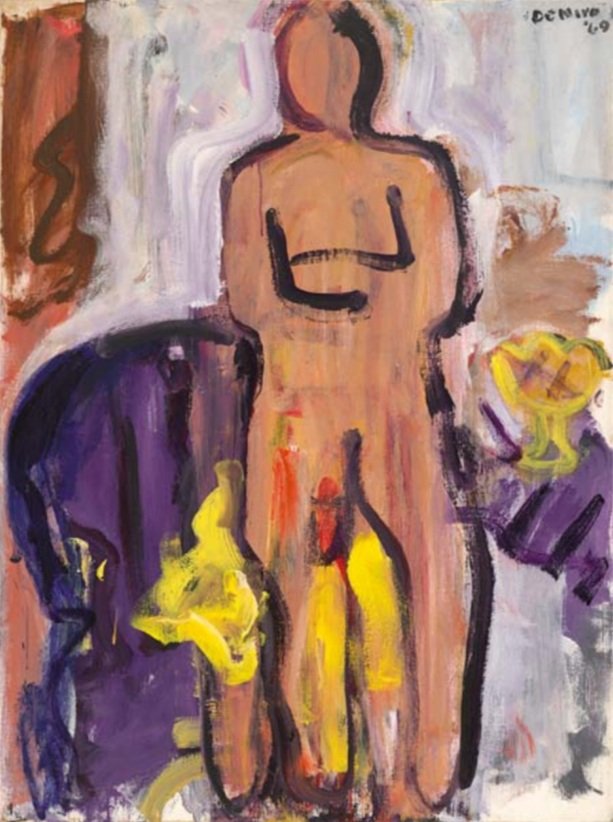
Robert De Niro, Sr.
Standing Nude Arms Crossed
Oil on canvas, 1969
48 x 36 x 2 inches
(framed: 60.5 x 48.5 x 2.75 inches)

Robert De Niro, Sr.
Nudes in an Interior
Oil on canvas, 1983
50.25 x 60.25 inches
(framed: 52.75 x 62.75 x 1.5 inches)
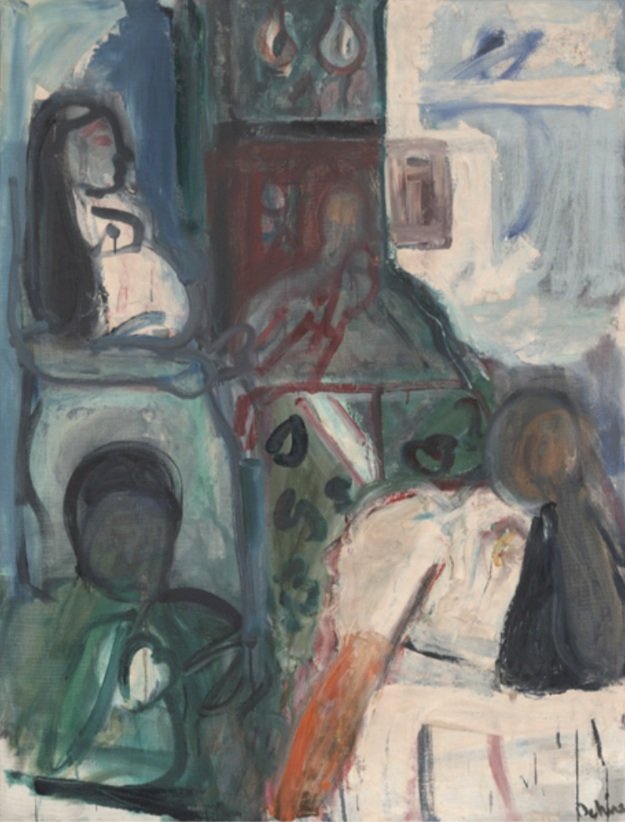
Robert De Niro, Sr.
Moroccan Women
Oil on canvas, 1956
48 x 36.5 inches
(framed: 49.5 x 37.5 inches)

Robert De Niro, Sr.
Untitled
Oil on canvas, c. 1980
22.25 x 20.25 inches
(framed: 29 x 26 x 2.5 inches)

Robert De Niro, Sr.
Untitled
Oil on canvas, 1971
30.25 x 25.25 inches
(framed: 32 x 27 x 1.125 inches)
Robert De Niro Sr. began his painting career at a young age and quickly gained national attention and respect. In a 1999 Newsweek article, author Christopher Dickey noted: “In 1950s New York, the Robert De Niro that people talked about was…often mentioned in the same breath as Jackson Pollock and Willem de Kooning. He was named one of the most promising painters of his generation.” Despite the reigning dogma that to be a serious painter one had to paint abstractly, De Niro remained resolutely representational and stood apart from the majority of postwar artists in New York. Like his Bay Area Figurative counterparts on the West Coast, De Niro was well versed in abstract expressionism—De Niro had been one of Hans Hofmann’s star students—utilizing many of Hofmann’s devices on his canvases. De Niro also maintained a strong affinity for the School of Paris and the work of Henri Matisse in particular. However, representational subject matter was something that he did not wish to discard. De Niro fused influences of American and European abstraction as a means of incorporating modernist concerns within his explorations of color, texture, and form.
De Niro’s work is in the permanent collection of many museums including the Hirshhorn Museum and Sculpture Garden, the Corcoran Gallery of Art in Washington, DC, the Metropolitan Museum of Art, the Whitney Museum of American Art, the Museum of Modern Art in New York, the Brooklyn Museum of Art, and the Oakland Museum of Art, among others.
MANUEL NERI
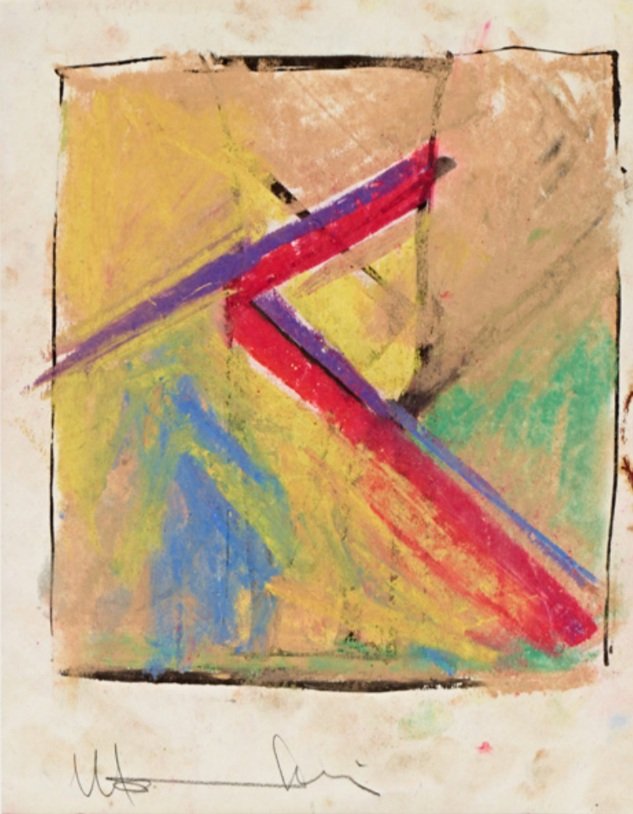
Manuel Neri
Pastel Study for Collage Paintings. No. 17
Pastel, ink and graphite on paper, 1960
11 x 8.5 inches
(framed: 25 x 21 x 2 inches)
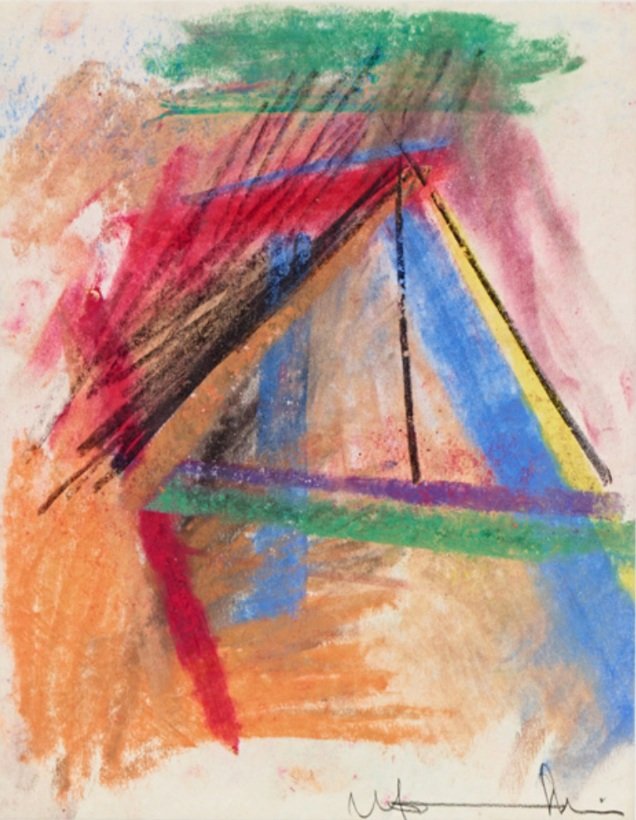
Manuel Neri
Pastel Study for Collage Paintings, No. 19
Pastel, ink and graphite on paper, 1960
11 x 8.5 inches
(framed: 25 x 21 x 2 inches)

Manuel Neri
Pastel Study for Collage Paintings, No. 21
Pastel, ink and graphite on paper, 1960
11 x 8.5 inches
(framed: 25 x 21 x 2 inches)

Manuel Neri
Pastel Study for Collage Paintings, No. 22
Pastel, ink and graphite on paper, 1960
11 x 8.5 inches
(framed dimensions: 25 x 21 x 2 inches)
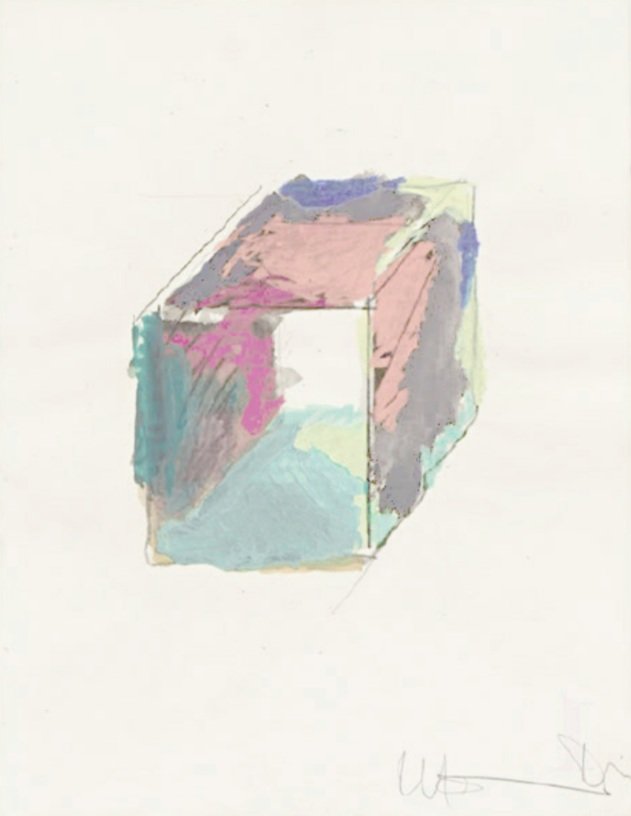
Manuel Neri
Pastel Study for Window Series No. 1
Oil Pastel, ink, graphite on paper, 1968
13.5 x 10.5 inches
(framed: 24.5 x 20.25 x 2 inches)
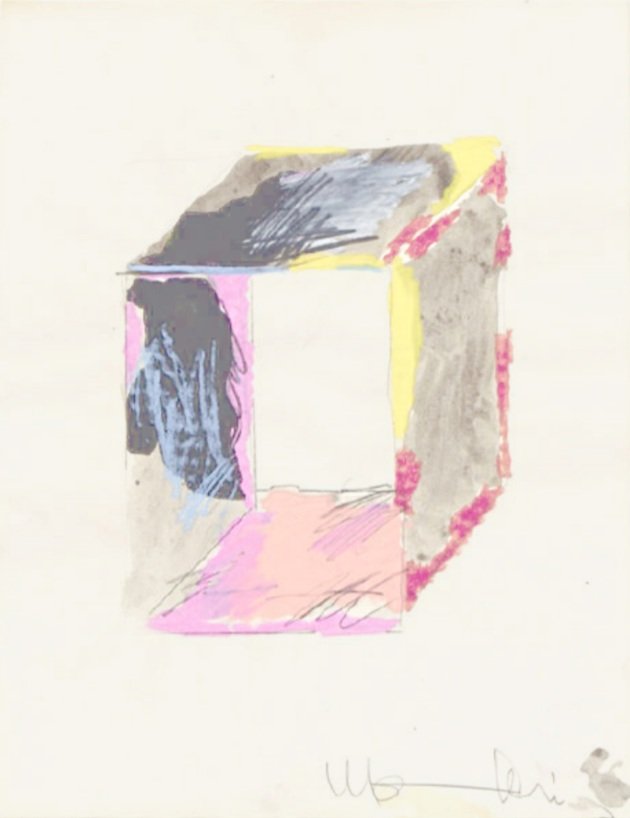
Manuel Neri
Pastel Study for Window Series No. 2
Oil Pastel, graphite on paper, 1968
13.5 x 10.5 inches
(framed: 26.75 x 22.75 x 2 inches)
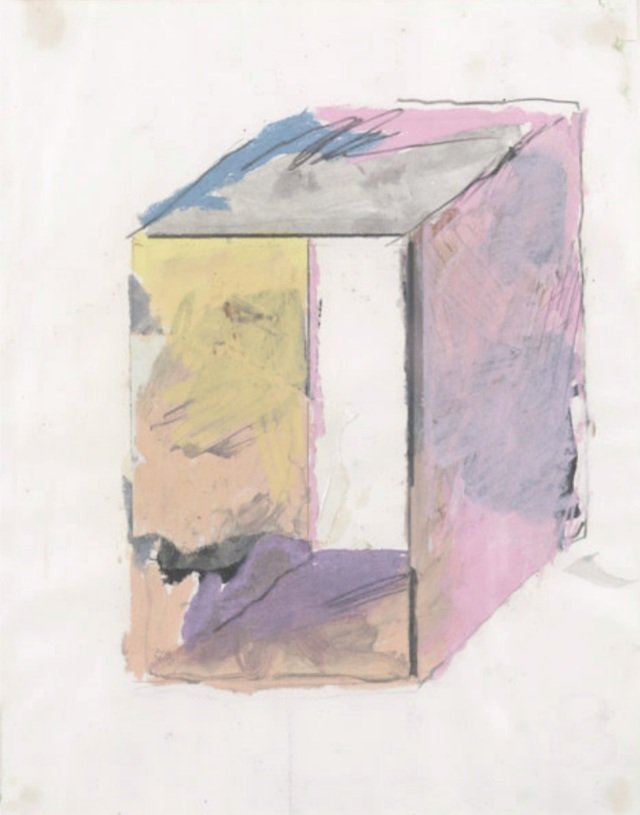
Manuel Neri
Pastel Study for Window Series No. 3
Mixed-media on paper, 1968
13.5 x 10.5 inches
(framed: 27 x 23 x 2.25 inches)

Manuel Neri
Pastel Study for Window Series No. 10
Mixed-media on paper, 1968
13.5 x 10.5 inches
(framed: 25.75 x 20.75 x 2 inches)
Manuel Neri is internationally celebrated as one of the foremost figurative sculptors working today. With a career spanning over fifty years, Neri is known as the only figural sculptor connected to the acclaimed Bay Area Figurative movement of the 1950s and 1960s and his work reflects the
improvisation in painting, poetry, jazz, and life that characterized San Francisco during that time. Neri was particularly influenced by his studies with Richard Diebenkorn and Elmer Bischoff (with whom Neri began studying painting in 1956) at the California School of Fine Arts in the late 1950s. Other powerful figures at CSFA included the legendary father of Abstract Expressionism, Clyfford Still, David Park, Clay Spohn, and Mark Rothko.
Manuel Neri was born in 1930 in Sanger, California. He studied at the University of California, Berkeley in 1951-52 and at the California School of Fine Arts in 1956-58, now known as the San Francisco Art Institute. Neri also taught at the San Francisco Art Institute and the University of California, Davis.
Neri's sculpture and painting is included in more than thirty American public collections, including the Metropolitan Museum of Art and Whitney Museum of American Art, New York; San Francisco Museum of Modern Art and Fine Arts Museums of San Francisco; Corcoran Gallery of Art and Smithsonian American Art Museum, Washington, D.C.; Denver Art Museum; and San Jose Museum of Art, among others.
In 2006, Neri received the Lifetime Achievement in Sculpture award from the International Sculpture Center, and in 2008, he received the Bay Area
Treasure Award from the San Francisco Museum of Modern Art. This annual lifetime achievement award recognizes Bay Area artists who continually define and redefine contemporary art.
MAX WEBER

Max Weber
Still Life
Oil on canvas, 1908-1909
18 x 15 inches
(framed: 24 x 21.5 x 2 inches)
Max Weber was described as “the artist best known for bringing European Modernism to America” by Art historian Celeste Connor in her writings. Her Essays on Art (1916) inspired generations of American artists and were instrumental in spreading Modern aesthetic theory. Weber became a highly visible and active member of the New York art scene early in his career, and remained so for the rest of his life. Born in Russia, Max Weber immigrated to New York at the age of ten. His formative years were spent in Paris, where he met and studied under such notables as Matisse, Cézanne, Picasso, and Henri Rousseau. During this time he was exposed to groundbreaking ideas and theories on art that transformed the way he represented visual reality. In addition to Matisse, Weber was also profoundly influenced by Cézanne and his theories regarding the visual relationship of forms, flattened space, and depicting traditional subject matter in a modern way. In 1910, after four years of study in Paris, Weber brought European Modernism to America and made it his own. By injecting wild, Fauvist color into cubism, he created a distinct new form. After 1930, when he developed a consistently identifiable style, one that was lyrical and Expressionistic, his imagery focused on romanticized landscapes, docile domestic scenes, and emotional religious themes. Even late in his career, Weber’s mode of portraiture—as seen in the work, Portrait—shows a continuing preoccupation with reworking Cubist ideas to invent a novel hybrid.
Weber’s work is included in the permanent collection of the
Art Institute of Chicago
Harvard Art Museums
Los Angeles County Museum of Art
Metropolitan Museum of Art
Museum of Fine Arts, Boston
Museum of Modern Art
National Gallery of Art
Phillips Collection
Smithsonian American Art Museum
Whitney Museum of American Art
among others.